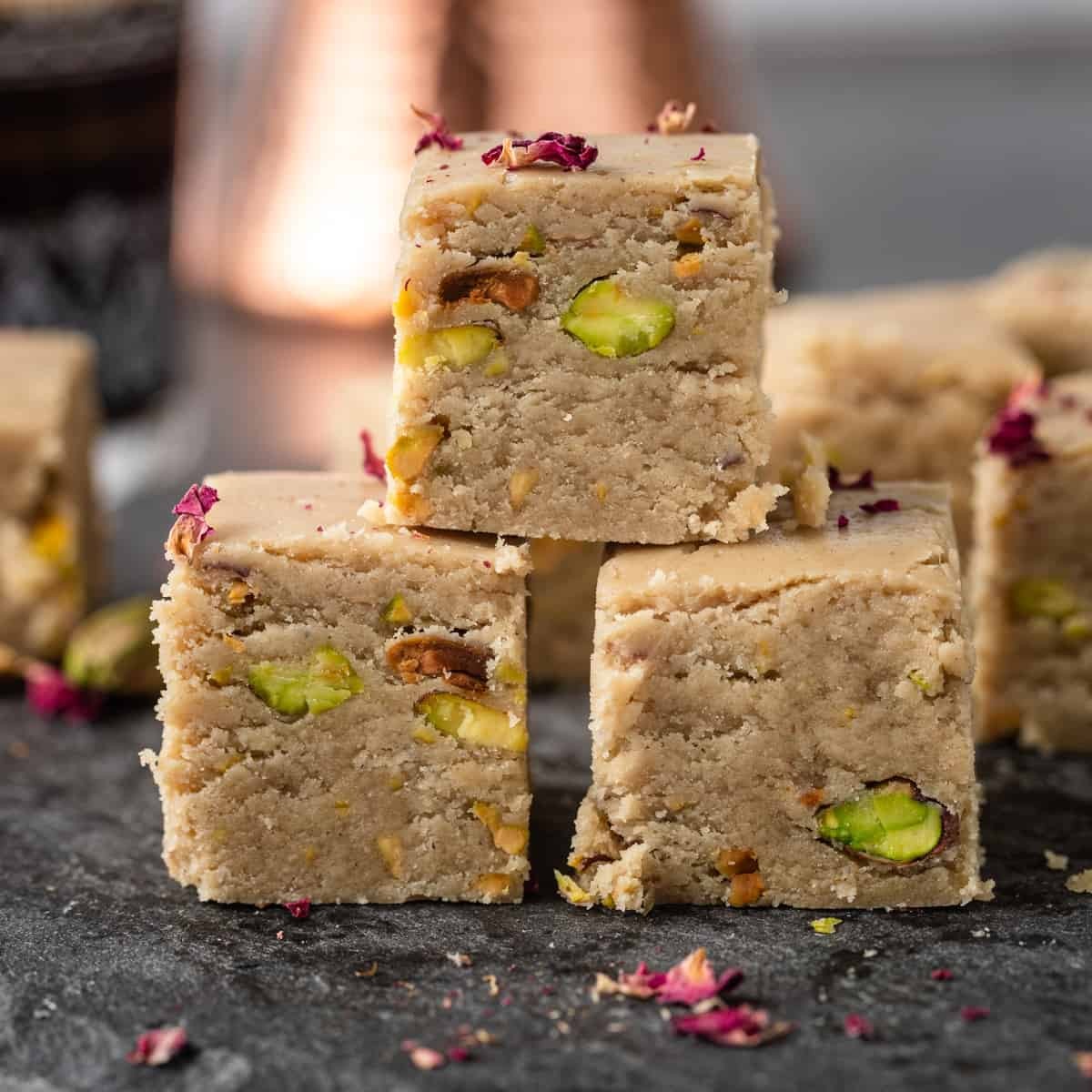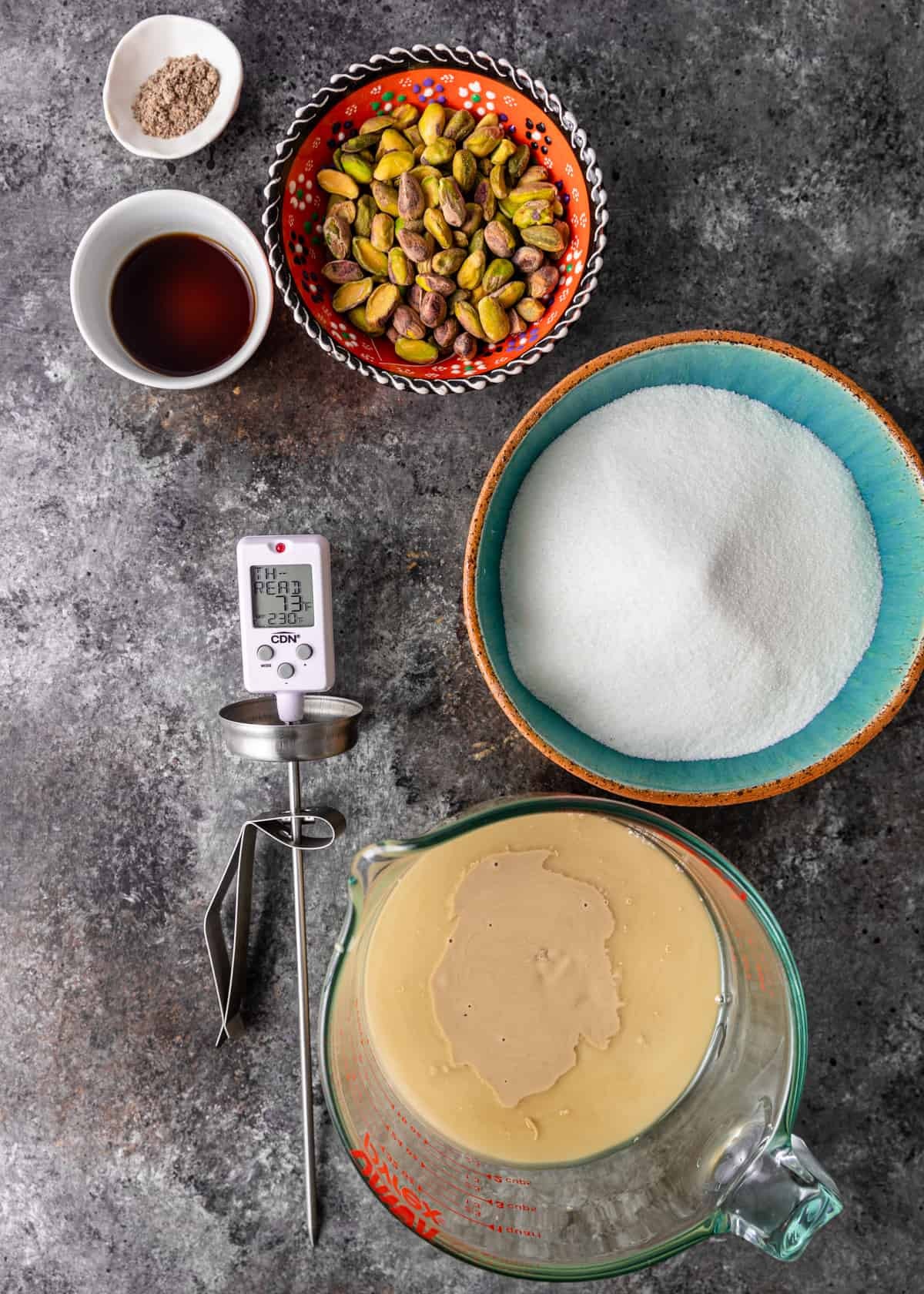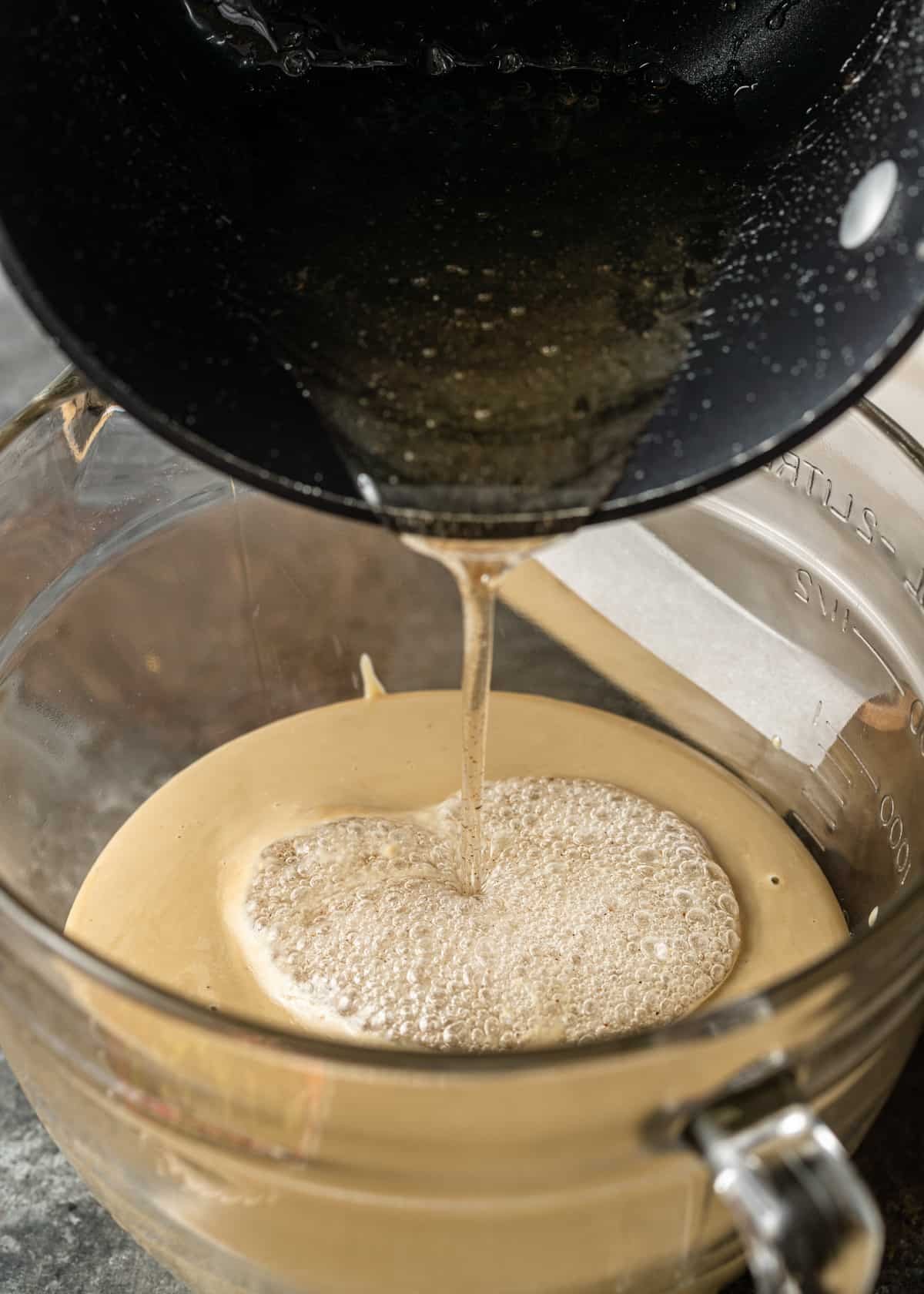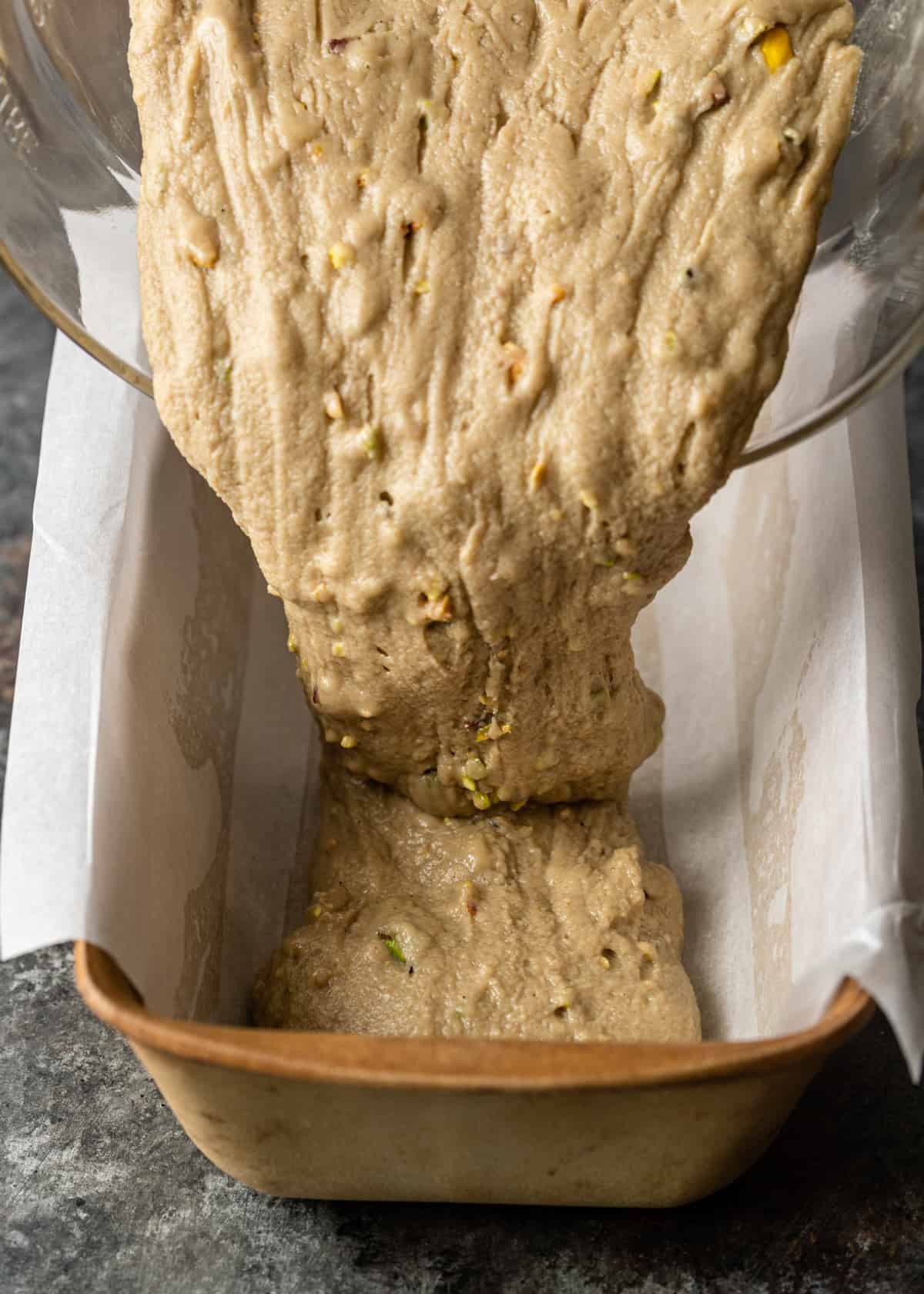Halva, a confection that transcends cultures and palates, offers a delightful journey into the world of sweet treats. At FOODS.EDU.VN, we believe in providing comprehensive and accessible information about global cuisines, and this exploration of halva is no exception. Discover the sweet secrets of this dessert, uncover its nutritional benefits, and learn how to make it yourself with our easy-to-follow guide. Indulge in the delightful sweetness and discover culinary treasures.
1. Defining Halva: A Sweet Beginning
Halva, a name derived from the Arabic word “halwa,” meaning sweet, is a dense, sweet confection that enjoys immense popularity across the Middle East, Central Asia, South Asia, the Balkans, and Eastern Europe. This delectable treat is cherished for its rich flavors, diverse textures, and cultural significance. Its adaptability allows it to be crafted from various ingredients, creating a wide array of regional variations.
- Etymology: The word “halva” originates from the Arabic term “halwa,” which simply means “sweet.”
- Definition: Halva is a dense, sweet confection, celebrated for its rich flavors and diverse textures.
- Culinary Significance: This dessert holds a significant place in the culinary traditions of numerous cultures.
2. A Global Journey: The History and Cultural Significance of Halva
The history of halva is as rich and diverse as the confection itself. Originating in the Middle East, halva’s journey spans centuries and continents, evolving with regional tastes and traditions.
2.1. Ancient Roots in the Middle East
The earliest known recipes resembling halva can be traced back to the 7th century in Persia, modern-day Iran. These early versions were made from mashed dates and milk, offering a glimpse into the humble beginnings of this beloved sweet. By the 9th century, the term “halva” was used to describe a variety of sweet dishes, marking its growing popularity.
2.2. The Ottoman Empire: A Golden Age for Halva
The Ottoman Empire played a crucial role in spreading halva’s popularity throughout its vast territories. During this era, halva became a staple in the imperial cuisine and was often prepared in elaborate ceremonies. Different variations emerged, incorporating ingredients such as sesame seeds, semolina, and nuts.
2.3. Regional Variations: A Tapestry of Flavors
As halva spread across different regions, it adapted to local ingredients and culinary preferences, resulting in a wide array of unique variations.
2.3.1. Sesame-Based Halva
This type of halva is particularly popular in the Middle East and the Mediterranean. It is made from tahini, a paste of ground sesame seeds, and sweetened with sugar or honey. The texture is often crumbly and dense, with a nutty flavor.
2.3.2. Semolina Halva
Common in India and South Asia, semolina halva is made from roasted semolina, ghee (clarified butter), sugar, and water. It is often flavored with cardamom, saffron, and nuts. The texture is soft and grainy, with a warm, comforting flavor.
2.3.3. Sunflower Seed Halva
Popular in Eastern Europe, this variation uses sunflower seed paste instead of tahini. It offers a slightly different flavor profile while maintaining the characteristic dense and sweet texture.
2.4. Cultural Significance: More Than Just a Dessert
Halva holds cultural significance in many societies, often served during religious festivals, weddings, and other special occasions. It is also a popular offering during mourning ceremonies, symbolizing comfort and remembrance.
- Religious Festivals: Halva is often served during religious festivals as a symbol of celebration and sweetness.
- Weddings: In some cultures, halva is a traditional wedding treat, representing prosperity and good fortune for the newlyweds.
- Mourning Ceremonies: Halva is sometimes offered during mourning ceremonies, providing comfort and symbolizing remembrance.
3. Unveiling the Varieties: A World of Halva Types
The versatility of halva is reflected in the diverse range of types found across the globe. From sesame-based delights to semolina wonders, each variety offers a unique culinary experience.
3.1. Sesame Halva: The Middle Eastern Classic
Sesame halva, also known as tahini halva, is a staple in Middle Eastern cuisine. Its primary ingredient is tahini, a paste made from ground sesame seeds, which provides a rich, nutty flavor and a smooth, creamy texture.
3.1.1. Ingredients and Preparation
Sesame halva typically includes tahini, sugar, and a binding agent such as soapwort root or egg whites. The ingredients are mixed and cooked until they form a dense, crumbly confection. Nuts, such as pistachios or almonds, are often added for extra flavor and texture.
3.1.2. Regional Variations
- Turkey: Turkish halva often includes pistachios and is known for its slightly grainy texture.
- Greece: Greek halva, also called “halvas,” is similar to Turkish halva but may include honey instead of sugar.
- Israel: Israeli halva is widely available in various flavors, including chocolate, vanilla, and coffee.
3.2. Semolina Halva: The South Asian Delight
Semolina halva, also known as “sooji halwa,” is a popular dessert in India, Pakistan, and other South Asian countries. It is made from semolina, a coarse wheat flour, which is roasted in ghee (clarified butter) until golden brown.
3.2.1. Ingredients and Preparation
Semolina halva typically includes semolina, ghee, sugar, water or milk, and flavorings such as cardamom, saffron, and nuts. The semolina is roasted in ghee until it develops a nutty aroma, then the sugar and water are added. The mixture is cooked until it thickens and the semolina is fully cooked.
3.2.2. Regional Variations
- India: Indian semolina halva often includes saffron and cardamom for a fragrant flavor.
- Pakistan: Pakistani semolina halva may include dried fruits such as raisins and apricots.
- Bangladesh: Bangladeshi semolina halva is often served during special occasions and festivals.
3.3. Sunflower Seed Halva: The Eastern European Twist
Sunflower seed halva is a popular variation in Eastern European countries such as Russia, Ukraine, and Belarus. It is made from ground sunflower seeds, which provide a distinct flavor and texture.
3.3.1. Ingredients and Preparation
Sunflower seed halva typically includes sunflower seeds, sugar, and a binding agent such as glucose syrup. The sunflower seeds are ground into a paste, then mixed with sugar and cooked until the mixture thickens.
3.3.2. Health Benefits
Sunflower seeds are rich in vitamin E, magnesium, and selenium, making sunflower seed halva a relatively nutritious treat.
3.4. Flour Halva: A Simple and Comforting Dessert
Flour halva, also known as “un halvası” in Turkish, is a simple and comforting dessert made from flour, butter, and sugar. It is often prepared at home and enjoyed as a warm, comforting treat.
3.4.1. Ingredients and Preparation
Flour halva typically includes flour, butter, sugar, and water or milk. The flour is roasted in butter until it turns golden brown, then the sugar and water are added. The mixture is cooked until it thickens and forms a smooth, creamy texture.
3.4.2. Variations
Some variations of flour halva include nuts, spices, or citrus zest for added flavor.
3.5. Other Notable Halva Variations
- Date Halva: Made from dates and nuts, this variation is common in the Middle East.
- Carrot Halva: A popular dessert in India, made from grated carrots, milk, and sugar.
- Cornstarch Halva: A simple and versatile halva made from cornstarch, sugar, and water.
- Rice Flour Halva: A gluten-free option made from rice flour, sugar, and water.
4. Crafting Halva: A Step-by-Step Guide to Homemade Goodness
Making halva at home is a rewarding experience that allows you to customize the flavors and textures to your liking. Here’s a step-by-step guide to creating your own batch of delicious halva.
4.1. Basic Sesame Halva Recipe
This recipe provides a foundation for creating your own sesame halva. Feel free to experiment with different flavorings and additions to create your unique version.
4.1.1. Ingredients:
- 1 ½ cups tahini
- 1 cup sugar
- ½ cup water
- 1 teaspoon vanilla extract
- ½ cup chopped pistachios or almonds (optional)
4.1.2. Equipment:
- Loaf pan or baking dish
- Saucepan
- Heat-proof bowl
- Spatula or wooden spoon
- Candy thermometer (optional)
4.1.3. Instructions:
- Prepare the Pan: Line a loaf pan or baking dish with parchment paper, leaving an overhang for easier removal.
- Combine Tahini and Vanilla: In a heat-proof bowl, combine the tahini and vanilla extract. Set aside.
- Make the Syrup: In a saucepan, combine the sugar and water. Heat over low heat, stirring until the sugar dissolves completely.
- Bring to a Boil: Increase the heat to medium and bring the syrup to a boil. If using a candy thermometer, cook until the syrup reaches 250°F (121°C), which is the firm-ball stage.
- Combine Ingredients: Carefully pour the hot syrup into the bowl with the tahini and vanilla. Stir vigorously with a spatula or wooden spoon until the mixture is fully combined. Be careful not to overmix.
- Add Nuts (Optional): If using nuts, add them to the mixture and stir to incorporate.
- Transfer to Pan: Pour the halva mixture into the prepared pan and smooth the top.
- Chill: Cover the pan with plastic wrap and refrigerate for at least 24 hours, or until the halva is firm.
- Serve: Remove the halva from the pan using the parchment paper overhang. Cut into slices and serve at room temperature.
4.2. Tips for Perfect Halva
- Use High-Quality Tahini: The quality of the tahini will greatly impact the flavor and texture of your halva. Look for tahini that is smooth, creamy, and has a nutty aroma.
- Don’t Overmix: Overmixing the halva can result in a tough texture. Stir just until the ingredients are combined.
- Control the Syrup Temperature: Cooking the syrup to the correct temperature is crucial for achieving the desired texture. If you don’t have a candy thermometer, you can test the syrup by dropping a small amount into cold water. If it forms a firm ball, it is ready.
- Chill Thoroughly: Chilling the halva for at least 24 hours allows it to fully set and develop its characteristic texture.
4.3. Variations and Additions
- Chocolate Halva: Add cocoa powder to the tahini mixture for a chocolatey twist.
- Coffee Halva: Add instant coffee granules to the tahini mixture for a coffee-flavored halva.
- Cardamom Halva: Add ground cardamom to the syrup for a fragrant and spicy halva.
- Rosewater Halva: Add rosewater to the tahini mixture for a floral and delicate flavor.
- Nut Halva: Experiment with different types of nuts, such as walnuts, pecans, or cashews.
- Dried Fruit Halva: Add chopped dried fruits, such as raisins, apricots, or cranberries, for added sweetness and texture.
5. Nutritional Value: A Sweet Treat with Potential Benefits
While halva is a sweet treat, it can also offer some nutritional benefits, depending on the ingredients used.
5.1. Key Nutrients
- Sesame Halva: Sesame seeds are a good source of calcium, iron, magnesium, and zinc. They also contain antioxidants and healthy fats.
- Semolina Halva: Semolina is a good source of carbohydrates and fiber. It also contains some iron and B vitamins.
- Sunflower Seed Halva: Sunflower seeds are rich in vitamin E, magnesium, and selenium. They also contain healthy fats and antioxidants.
5.2. Health Benefits
- Antioxidants: Sesame seeds and sunflower seeds contain antioxidants that can help protect the body against damage from free radicals.
- Minerals: Halva can be a good source of essential minerals such as calcium, iron, magnesium, and zinc.
- Energy: Halva provides a quick source of energy due to its high sugar content.
5.3. Considerations
- High Sugar Content: Halva is high in sugar, so it should be consumed in moderation.
- Calorie Density: Halva is a calorie-dense food, so it’s important to be mindful of portion sizes.
- Ingredient Sensitivity: Be aware of potential allergens, such as nuts or sesame seeds.
| Nutrient | Sesame Halva (per 100g) | Semolina Halva (per 100g) | Sunflower Seed Halva (per 100g) |
|---|---|---|---|
| Calories | 540 | 350 | 580 |
| Fat | 32g | 15g | 45g |
| Carbohydrates | 45g | 50g | 30g |
| Protein | 15g | 5g | 12g |
| Calcium | 400mg | 20mg | 80mg |
| Iron | 4mg | 1mg | 3mg |
| Vitamin E | N/A | N/A | 35mg |




Note: Nutritional values may vary depending on the specific ingredients and preparation methods.
6. Serving Suggestions: Enjoying Halva in Creative Ways
Halva can be enjoyed in a variety of ways, from simple snacks to elegant desserts. Here are some serving suggestions to inspire your culinary creativity.
6.1. Classic Pairings
- With Tea or Coffee: Halva is a perfect accompaniment to a cup of tea or coffee, providing a sweet contrast to the bitter beverage.
- As a Dessert: Halva can be served as a standalone dessert or as part of a dessert platter with fruits and nuts.
- As a Snack: Halva can be enjoyed as a quick and satisfying snack any time of day.
6.2. Creative Uses
- Halva Spread: Spread halva on toast or crackers for a sweet and nutty breakfast or snack.
- Halva Crumble: Crumble halva over ice cream or yogurt for added texture and flavor.
- Halva Filling: Use halva as a filling for pastries or cakes.
- Halva Garnish: Garnish desserts with small pieces of halva for a touch of sweetness and elegance.
6.3. Halva-Inspired Recipes
- Halva Brownies: Add crumbled halva to your favorite brownie recipe for a unique twist.
- Halva Ice Cream: Incorporate halva into homemade ice cream for a nutty and sweet treat.
- Halva Energy Bars: Combine halva with nuts, seeds, and dried fruits to create healthy and delicious energy bars.
7. Storing Halva: Keeping Your Sweet Treat Fresh
Proper storage is essential for maintaining the flavor and texture of halva. Here are some tips for storing halva to ensure it stays fresh for as long as possible.
7.1. Storage Guidelines
- Airtight Container: Store halva in an airtight container to prevent it from drying out and absorbing unwanted odors.
- Cool, Dry Place: Keep the container in a cool, dry place, away from direct sunlight and heat.
- Refrigeration (Optional): If you live in a warm climate or want to extend the shelf life of your halva, you can store it in the refrigerator. However, refrigeration may affect the texture of the halva, making it slightly harder.
7.2. Shelf Life
- Room Temperature: Halva can typically be stored at room temperature for several weeks.
- Refrigeration: Halva can be stored in the refrigerator for up to 4-6 months.
7.3. Tips for Maintaining Freshness
- Avoid Moisture: Moisture can cause halva to become sticky and spoil more quickly.
- Separate Flavors: If you have different flavors of halva, store them separately to prevent the flavors from mixing.
- Bring to Room Temperature: If you refrigerate your halva, allow it to come to room temperature before serving for the best texture and flavor.
8. Halva Around the World: A Culinary Exploration
Halva’s global presence is a testament to its versatility and appeal. From the Middle East to South Asia to Eastern Europe, each region has embraced halva and adapted it to its own culinary traditions.
8.1. Middle East
In the Middle East, halva is typically made from tahini and is often flavored with pistachios, almonds, or other nuts. It is a popular treat during Ramadan and other religious festivals.
- Turkey: Turkish halva is known for its slightly grainy texture and is often enjoyed with tea or coffee.
- Lebanon: Lebanese halva is similar to Turkish halva but may include honey or rosewater.
- Egypt: Egyptian halva is often made with sesame seeds and is a popular street food.
8.2. South Asia
In South Asia, halva is typically made from semolina or flour and is often flavored with cardamom, saffron, and nuts. It is a popular dessert during weddings and other special occasions.
- India: Indian halva is known for its vibrant colors and fragrant flavors.
- Pakistan: Pakistani halva is often made with dried fruits and is a popular treat during Eid.
- Bangladesh: Bangladeshi halva is often served during special occasions and festivals.
8.3. Eastern Europe
In Eastern Europe, halva is often made from sunflower seeds and is a popular snack.
- Russia: Russian halva is known for its slightly bitter flavor and is often enjoyed with tea.
- Ukraine: Ukrainian halva is similar to Russian halva but may include honey or chocolate.
- Belarus: Belarusian halva is often made with sunflower seeds and is a popular street food.
8.4. Other Regions
Halva can also be found in other regions of the world, such as the Balkans and Central Asia, where it has been adapted to local tastes and traditions.
- Greece: Greek halva is similar to Turkish halva and is often enjoyed during Lent.
- Armenia: Armenian halva is often made with flour and is a popular treat during Easter.
- Central Asia: Halva in Central Asia is often made with nuts and dried fruits and is a popular snack.
9. Halva and Special Occasions: A Sweet Tradition
Halva’s presence at special occasions around the world underscores its cultural significance and its role as a symbol of celebration, comfort, and remembrance.
9.1. Religious Festivals
Halva is often served during religious festivals in various cultures, representing a sense of joy and community.
- Ramadan (Islam): In Muslim countries, halva is a popular treat during Ramadan, the holy month of fasting. It is often served after Iftar, the evening meal that breaks the fast.
- Diwali (Hinduism): In India, halva is a common dessert during Diwali, the festival of lights.
- Easter (Christianity): In some Eastern European countries, halva is a traditional treat during Easter.
- Passover (Judaism): Some Jewish communities include halva as part of their Passover celebrations, adapting recipes to be kosher for Passover.
9.2. Weddings
In some cultures, halva is a traditional wedding treat, symbolizing prosperity and good fortune for the newlyweds.
- Middle Eastern Weddings: Halva is often served at Middle Eastern weddings as a symbol of sweetness and happiness.
- South Asian Weddings: In South Asia, halva is a common dessert during weddings, often prepared with elaborate decorations.
9.3. Mourning Ceremonies
Halva is sometimes offered during mourning ceremonies, providing comfort and symbolizing remembrance.
- Jewish Mourning Traditions: In Jewish tradition, halva is sometimes served during Shiva, the period of mourning following a death.
- Middle Eastern Mourning Customs: Halva may be prepared and shared among family and friends as a gesture of comfort and support.
10. Frequently Asked Questions About Halva
Here are some frequently asked questions about halva to further enhance your understanding of this delightful confection.
-
What is halva made of?
Halva can be made from a variety of ingredients, including tahini (sesame seed paste), semolina, flour, sunflower seeds, or carrots, depending on the regional variation. It is typically sweetened with sugar, honey, or dates. -
Is halva gluten-free?
Most semolina and flour-based halva varieties contain gluten. However, tahini-based and sunflower seed-based halva are naturally gluten-free. Always check the ingredient list to ensure the halva is gluten-free. -
Is halva vegan?
The vegan status of halva depends on the ingredients used. Some recipes may include dairy products, such as milk or butter (ghee). However, many halva recipes can be easily adapted to be vegan by using plant-based milk and butter substitutes. -
How long does halva last?
Halva can typically be stored at room temperature for several weeks or in the refrigerator for up to 4-6 months. -
What does halva taste like?
The taste of halva varies depending on the ingredients used. Sesame halva has a nutty and slightly bitter flavor, while semolina halva is sweet and comforting. -
Is halva healthy?
Halva can offer some nutritional benefits, depending on the ingredients used. However, it is high in sugar and should be consumed in moderation. -
Can I make halva at home?
Yes, halva is relatively easy to make at home. There are many recipes available online and in cookbooks. -
What are some variations of halva?
There are many variations of halva, including sesame halva, semolina halva, sunflower seed halva, carrot halva, and chocolate halva. -
Where can I buy halva?
Halva can be found in Middle Eastern, South Asian, and Eastern European grocery stores. It is also available online. -
How is halva traditionally served?
Halva is traditionally served as a dessert or snack. It can be enjoyed on its own or with tea, coffee, or other beverages.
At FOODS.EDU.VN, we believe that exploring different cuisines is a way to connect with cultures around the world. Halva, with its rich history and diverse variations, offers a unique and delicious way to embark on a culinary adventure.
Are you eager to dive deeper into the sweet world of halva and explore more culinary treasures? Visit FOODS.EDU.VN today to discover a wealth of recipes, cooking tips, and cultural insights. Whether you’re a seasoned chef or a curious beginner, our comprehensive resources will inspire you to create delicious and authentic dishes in your own kitchen. Don’t miss out on the opportunity to expand your culinary horizons and unlock the secrets of global cuisine! Contact us at 1946 Campus Dr, Hyde Park, NY 12538, United States or Whatsapp: +1 845-452-9600. You can also visit our website foods.edu.vn for more information.